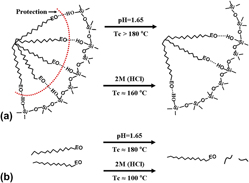Crossref Citations
This article has been cited by the following publications. This list is generated based on data provided by
Crossref.
Qian, Kun
Liu, Fang
Yang, Jie
Huang, Xiaodan
Gu, Wenyi
Jambhrunkar, Siddharth
Yuan, Pei
and
Yu, Chengzhong
2013.
Pore size-optimized periodic mesoporous organosilicas for the enrichment of peptides and polymers.
RSC Advances,
Vol. 3,
Issue. 34,
p.
14466.
Yang, Jie
Zhou, Liang
Zhang, Jun
Zou, Jin
Yuan, Zhiguo
and
Yu, Chengzhong
2013.
Confinement of Chemisorbed Phosphates in a Controlled Nanospace with Three‐Dimensional Mesostructures.
Chemistry – A European Journal,
Vol. 19,
Issue. 18,
p.
5578.
Jambhrunkar, Siddharth
Yu, Meihua
Yang, Jie
Zhang, Jun
Shrotri, Abhijit
Endo-Munoz, Liliana
Moreau, Joël
Lu, Gaoqing
and
Yu, Chengzhong
2013.
Stepwise Pore Size Reduction of Ordered Nanoporous Silica Materials at Angstrom Precision.
Journal of the American Chemical Society,
Vol. 135,
Issue. 23,
p.
8444.
Jambhrunkar, Siddharth
Qu, Zhi
Popat, Amirali
Karmakar, Surajit
Xu, Chun
and
Yu, Chengzhong
2014.
Modulating in vitro release and solubility of griseofulvin using functionalized mesoporous silica nanoparticles.
Journal of Colloid and Interface Science,
Vol. 434,
Issue. ,
p.
218.
Jambhrunkar, Siddharth
Qu, Zhi
Popat, Amirali
Yang, Jie
Noonan, Owen
Acauan, Luiz
Ahmad Nor, Yusilawati
Yu, Chengzhong
and
Karmakar, Surajit
2014.
Effect of Surface Functionality of Silica Nanoparticles on Cellular Uptake and Cytotoxicity.
Molecular Pharmaceutics,
Vol. 11,
Issue. 10,
p.
3642.
Huang, Xiaodan
Liu, Yang
Zhang, Hongwei
Zhang, Jun
Noonan, Owen
and
Yu, Chengzhong
2017.
Free-standing monolithic nanoporous graphene foam as a high performance aluminum-ion battery cathode.
Journal of Materials Chemistry A,
Vol. 5,
Issue. 36,
p.
19416.
Vishnevskiy, A. S.
Seregin, D. S.
Vorotilov, K. A.
Sigov, A. S.
Mogilnikov, K. P.
and
Baklanov, M. R.
2019.
Effect of water content on the structural properties of porous methyl-modified silicate films.
Journal of Sol-Gel Science and Technology,
Vol. 92,
Issue. 2,
p.
273.
Wang, Yiren
and
Yang, Ralph T.
2020.
Template Removal from SBA-15 by Ionic Liquid for Amine Grafting: Applications to CO2 Capture and Natural Gas Desulfurization.
ACS Sustainable Chemistry & Engineering,
Vol. 8,
Issue. 22,
p.
8295.
Cherevotan, Arjun
Raj, Jithu
and
Peter, Sebastian C.
2021.
An overview of porous silica immobilized amines for direct air CO2 capture.
Journal of Materials Chemistry A,
Vol. 9,
Issue. 48,
p.
27271.
Vishnevskiy, Alexey S.
Vorotyntsev, Dmitry A.
Seregin, Dmitry S.
and
Vorotilov, Konstantin A.
2022.
Effect of surface hydrophobisation on the properties of a microporous phenylene-bridged organosilicate film.
Journal of Non-Crystalline Solids,
Vol. 576,
Issue. ,
p.
121258.
Steinberg, Paula Y.
Borovik, Paula F.
Soler Illia, Galo J. A. A.
and
Angelomé, Paula C.
2022.
Following thermal evolution of mesoporous TiO2: from the sol to the oxide.
Journal of Sol-Gel Science and Technology,
Vol. 102,
Issue. 1,
p.
151.
